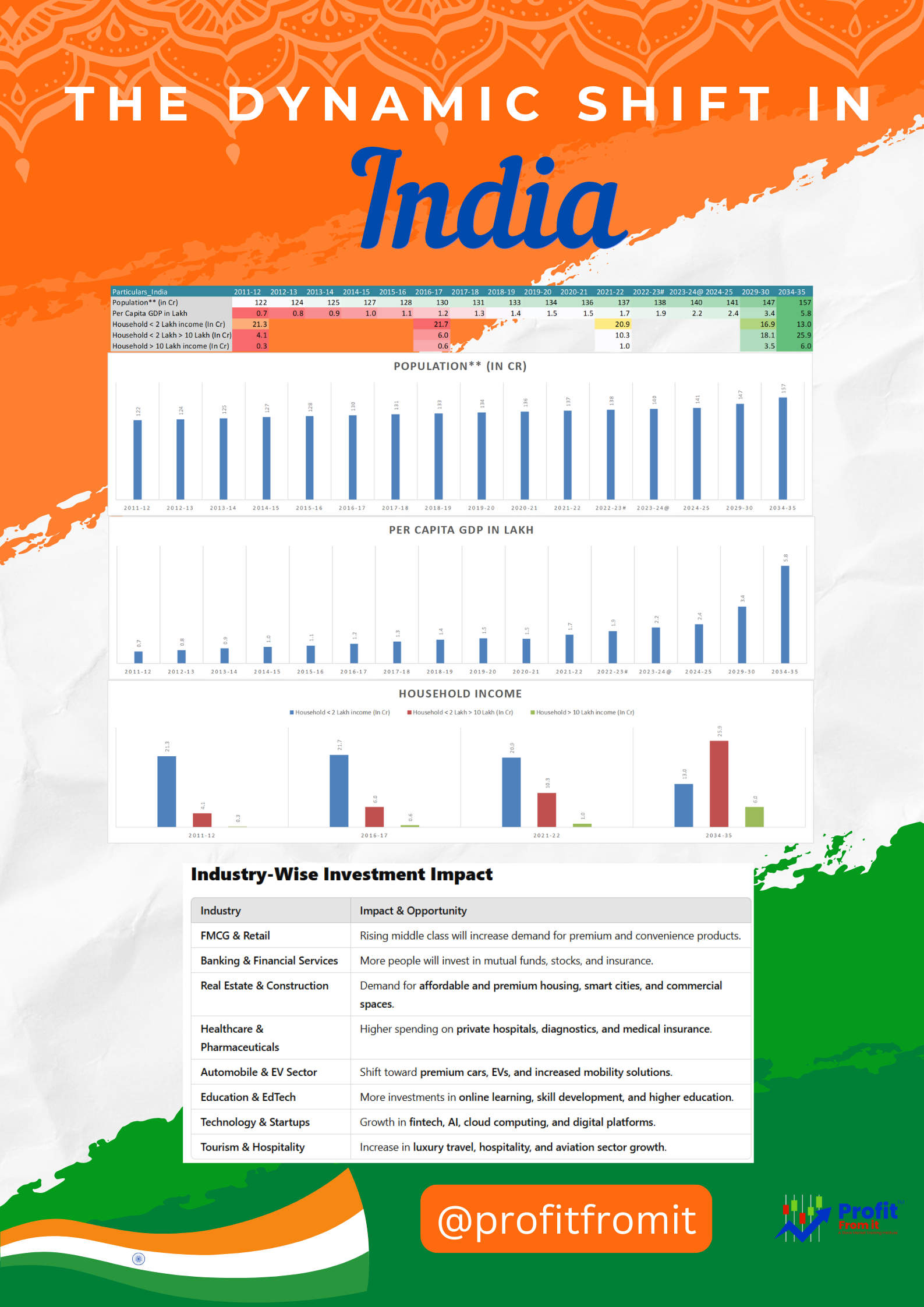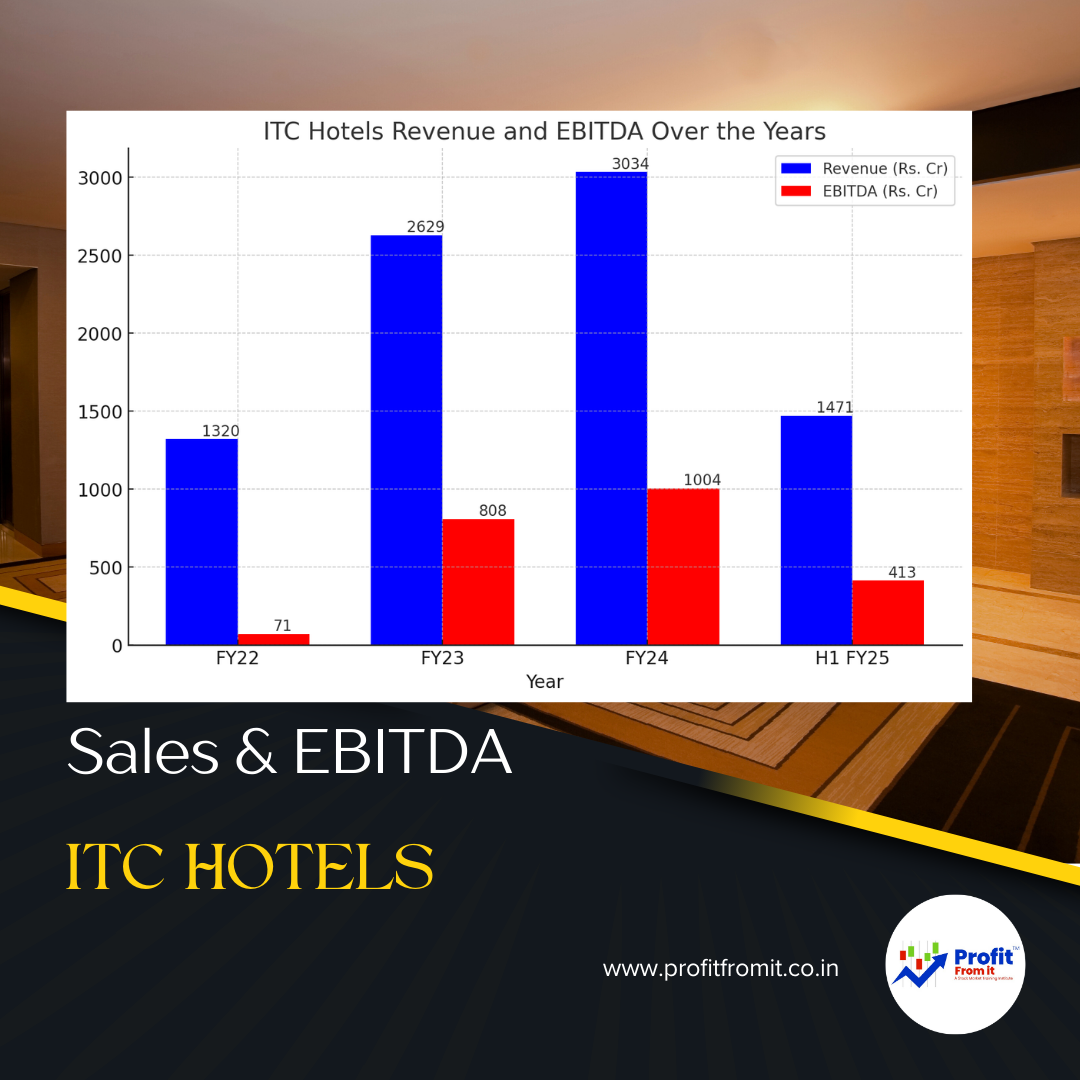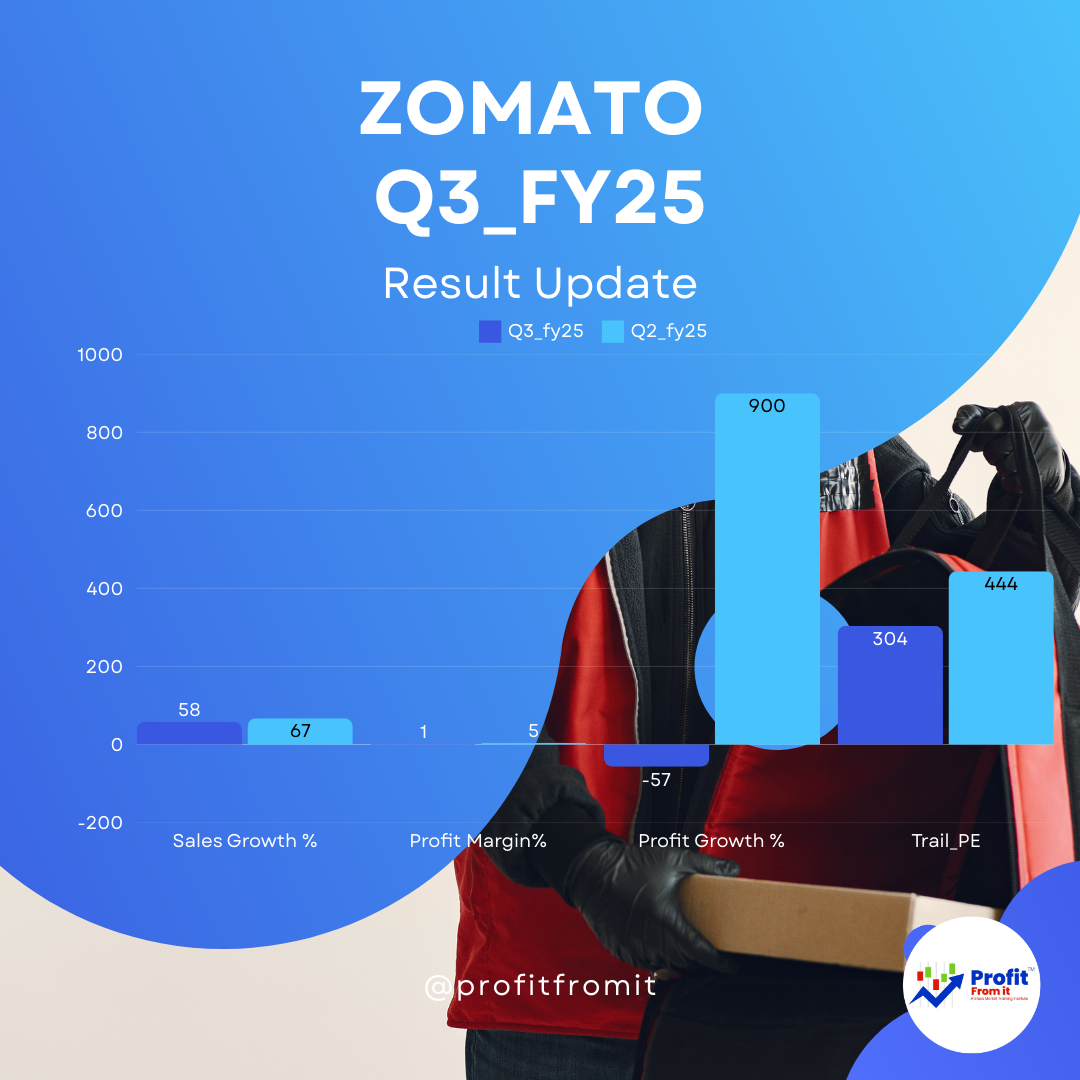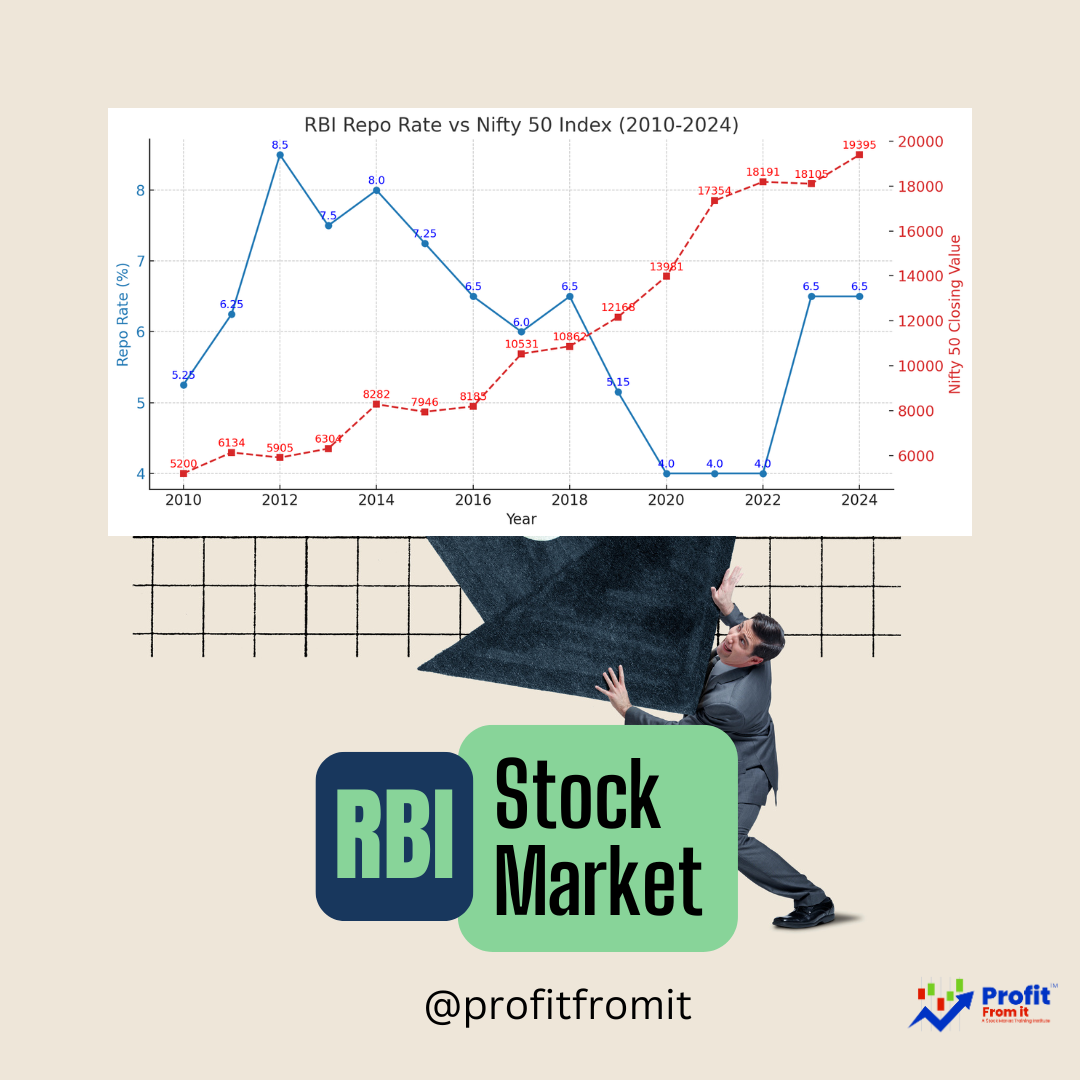
India's Economic and Demographic Trend Analysis
As shown in the image, The dataset presents historical economic trends along with projections for FY2030 & FY2035. Analysis of key trends, their investment implications, and potential opportunities across industries.
Key Trends & Insights
1. Population Growth (Demographic Expansion)
Historical Data (2011-22): India's population grew from 122 Cr (2011-12) to 137 Cr (2022-23).
Future Projections: Expected to reach 147 Cr by FY2030 and 157 Cr by FY2035.
Trend Analysis:
Steady population growth supports a growing labor force and consumer base.
Rising urbanization will fuel demand for housing, transport, and urban infrastructure.
Young population demographics will drive digital adoption, technology, and innovation.
Investment Opportunities:
FMCG & Consumer Goods: Expanding demand for daily essentials, packaged food, and personal care.
Real Estate & Infrastructure: Higher urbanization requires housing, smart cities, and commercial spaces.
Healthcare & Pharmaceuticals: Increased need for hospitals, diagnostics, and medical insurance.
2. Per Capita GDP Growth (Economic Expansion)
Historical Growth: Increased from ₹0.7 Lakh (2011-12) to ₹2.3 Lakh (2024-25).
Future Projection: Expected to reach ₹3.4 Lakh by FY2030 and ₹5.8 Lakh by FY2035.
Trend Analysis:
Rapid rise in per capita GDP signals economic expansion and improved living standards.
Rising disposable income will accelerate premiumization and discretionary spending.
Transition from a low-income to a middle-income economy drives infrastructure, education, and financial growth.
Investment Opportunities:
Luxury & Premium Consumer Goods: Apparel, automobiles, and electronic gadgets will see higher demand.
Banking & Financial Services: Increased savings, investments, and credit expansion.
Travel & Tourism: Higher affordability for both domestic and international travel.
3. Income Distribution Shift (Rising Middle & High-Income Households)
Low-Income Households (< ₹2 Lakh)
Historical: 21.3 Cr in 2011-12 → 20.9 Cr in 2021-22 (gradual decline) despite increasing households in India.
Future: Expected to drop significantly to 10.3 Cr (2034-35).
Implication: Declining low-income households indicate poverty reduction and a transition toward a higher-income economy.
Middle-Class Households (₹2-10 Lakh)
Historical: 4.1 Cr (2011-12) → 10.3 Cr (2021-22).
Future Projection: 25.9 Cr by FY2035.
Implication: The explosive growth of the middle-class segment will be the key driver of consumer demand, retail, and housing.
High-Income Households (> ₹10 Lakh)
Historical: 0.3 Cr (2011-12) → 1.0 Cr (2022-23).
Future Projection: 6.0 Cr by FY2035.
Implication: India is witnessing an emerging affluent class, which will drive demand for luxury products, premium healthcare, and investment services.
Investment Opportunities:
Retail & Ecommerce: Rapid shift toward premium brands, online shopping.
Automobiles & EVs: Growth in premium car demand and electric vehicle adoption.
Education & EdTech: Higher spending on quality education, online learning, and skill development.
Industry-Wise Investment Impact
Investment Recommendations
Instant Impact:
E-commerce, fintech, and digital services (rising internet penetration and digital adoption).
EdTech and skilling platforms (growing demand for online education and upskilling).
Slow but steady Impact:
EV and Automobile Industry (transition from fuel to electric).
Financial Services (investment in mutual funds, insurance penetration).
Long-Term Impact:
Luxury Consumer Goods & Premium Retail (affluent class expansion).
Smart Cities & Real Estate (mass urbanization and infrastructure demand).
Final Takeaway for Investors
India’s economic transition is clear: Higher incomes, expanding middle-class, and urbanization.
Sectors benefiting most: E-commerce, fintech, automobiles, real estate, healthcare, and luxury goods.
Long-term growth story: A shift toward a consumer-driven economy with increasing affluence.



 for Investors The provided chart outlines key metrics for Nifty 500 companies across different periods (FY22 t.png)





